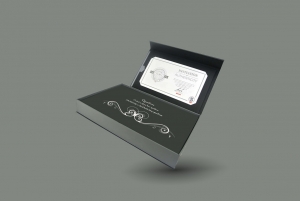please click here:
https://www.shdtimber.com/products.html
Introduction to Ovangkol Wood
Ovangkol wood, also known as Amazique or Guibourtia ehie, is a hardwood species native to tropical West Africa. It has become increasingly popular in both the furniture and musical instrument industries due to its durability, workability, and striking grain patterns. With its warm golden-brown hues and darker streaks, Ovangkol serves as a versatile alternative to more expensive hardwoods like rosewood and mahogany.
In this article, we will explore the unique properties of Ovangkol, its uses across industries, comparisons with other timbers, and key considerations for working with this exotic hardwood.
Origin and Growth Habitat
Ovangkol is sourced primarily from countries such as Ghana, Cameroon, and Ivory Coast. The tree can grow up to 150 feet in height, with trunk diameters often exceeding 3 feet. Its adaptability to tropical climates makes it a sustainable choice, particularly when sourced from responsibly managed forests.
The wood is often exported in both sawn timber and veneer form, serving as a valuable material in global markets.
Physical and Mechanical Properties
Appearance
Ovangkol wood has a medium-to-coarse texture, with interlocked grain that can create unique patterns. Its coloration ranges from yellowish-brown to dark brown with gray or black streaks, giving it a bold and exotic character.
Density and Strength
-
Average dried weight: 47 lbs/ft³ (755 kg/m³)
-
Janka hardness: 830 lbf
-
Good bending and crushing strength
These characteristics make it strong enough for heavy-duty applications, while still being workable for fine detailing.
Durability
Ovangkol is moderately durable, with good resistance to wear. However, it is only moderately resistant to decay and insect attack, so proper treatment is recommended in exterior applications.
Workability
Woodworkers often appreciate Ovangkol for its balance of density and ease of machining. The interlocked grain, while visually attractive, can pose challenges during planing, leading to tear-out if sharp tools are not used.
-
Machining: Responds well to both hand and machine tools.
-
Finishing: Accepts oils and finishes effectively, highlighting the dramatic grain.
-
Glues and fasteners: Works reliably with standard adhesives and nails.
Dust from Ovangkol can be irritating to skin and lungs, so proper safety measures are essential when working with it.
Applications of Ovangkol Wood
Furniture Making
Ovangkol's appealing grain and durability make it a top choice for luxury furniture. Dining tables, cabinets, and flooring panels are often crafted from this species, bringing both strength and visual appeal.
Musical Instruments
Perhaps one of the most recognized uses of Ovangkol is in the world of guitars. Leading manufacturers use it as a substitute for rosewood due to export restrictions and environmental concerns. It is commonly found in:
-
Acoustic guitar back and sides
-
Electric guitar bodies
-
Percussion instruments
Musicians appreciate its tonal qualities, which fall between the warmth of mahogany and the brightness of maple.
Decorative Veneers
Its bold streaks and patterns are often sliced into veneers for architectural panels, luxury interiors, and fine cabinetry.
Comparison with Other Popular Woods
| Feature | Ovangkol Wood | Rosewood | Mahogany | Teak |
|---|---|---|---|---|
| Color Tone | Yellow-brown with dark streaks | Rich brown to purplish hues | Reddish-brown | Golden brown |
| Workability | Good, but tear-out possible | Moderate, dense | Easy to work | Fair, silica content |
| Durability | Moderate | High | Moderate | Very High |
| Common Applications | Furniture, guitars, veneer | Instruments, luxury furniture | Furniture, boats | Outdoor furniture, decking |
| Sustainability | Moderate, regulated | Limited availability, restrictions | Moderate | High concern, often plantation-grown |
This comparison shows how Ovangkol positions itself as a versatile, cost-effective alternative to high-end hardwoods while still offering distinct beauty and functionality.
Sustainability Considerations
The demand for exotic hardwoods has raised concerns about overharvesting. While Ovangkol is not currently listed as endangered, it is vital to source it from suppliers who follow responsible forestry practices. Certification from organizations such as FSC (Forest Stewardship Council) helps ensure sustainable trade and environmental protection.
Advantages of Ovangkol Wood
-
Attractive and exotic grain pattern
-
Strong and durable for indoor applications
-
Suitable for both structural and decorative uses
-
Excellent tonal properties for musical instruments
-
More affordable than rosewood or teak
Limitations of Ovangkol Wood
-
Prone to tear-out when planing
-
Moderate natural durability (needs treatment for outdoor use)
-
Potential for allergic reactions from dust
-
Not as dimensionally stable as some alternatives
Care and Maintenance
Ovangkol furniture and instruments should be protected from extreme humidity changes to avoid warping. Regular oiling or waxing enhances its luster and protects the surface. For guitars, periodic conditioning with suitable fretboard oils helps preserve tone and appearance.
Future of Ovangkol in Global Markets
As environmental regulations tighten on traditional hardwoods like rosewood, Ovangkol is expected to play an increasingly important role in both the furniture and music industries. Its unique aesthetics, combined with sustainable sourcing potential, make it a promising material for modern applications.
Frequently Asked Questions
1. Is Ovangkol wood good for guitars?
Yes, Ovangkol produces a balanced tone, combining warmth with brightness, making it ideal for acoustic and electric guitars.
2. How does Ovangkol compare to rosewood?
While rosewood is denser and darker, Ovangkol offers similar tonal qualities and striking grain patterns at a more accessible price point.
3. Can Ovangkol be used outdoors?
It can be used outdoors with proper sealing and treatment, though teak or ipe may perform better in high-moisture environments.
4. Does Ovangkol cause allergic reactions?
Some woodworkers report skin and respiratory irritation from its dust. Using protective masks and gloves is recommended.
5. Is Ovangkol sustainable?
Yes, when sourced from certified suppliers, Ovangkol can be a sustainable alternative to overharvested hardwoods like rosewood.
Article Summary
Ovangkol wood, a West African hardwood, is valued for its rich grain, strength, and versatility. It is widely used in furniture, veneers, and musical instruments, particularly guitars. Offering an affordable alternative to rosewood, it balances beauty and durability while supporting sustainable sourcing.






